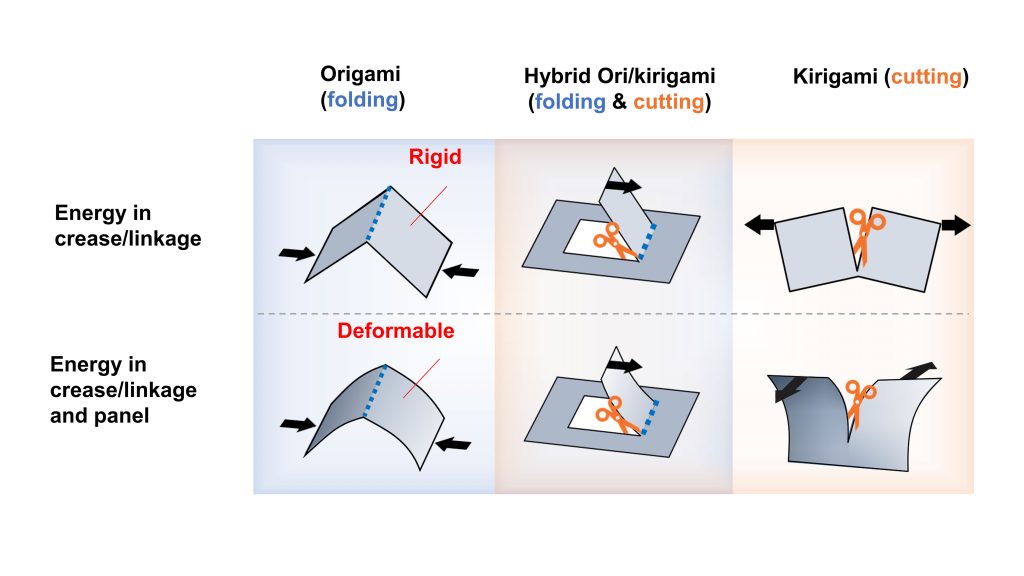From the Journal: Applied Physics Reviews
WASHINGTON, November 23, 2021 — The ancient arts of origami, the art of paper-folding, and kirigami, the art of paper-cutting, have gained popularity in recent years among researchers building mechanical metamaterials. Folding and cutting 2D thin-film materials transforms them into complex 3D structures and shapes with unique and programmable mechanical properties.
In Applied Physics Reviews, by AIP Publishing, researchers in the United States and China categorize origami- and kirigami-based mechanical metamaterials, artificially engineered materials with unusual mechanical properties, into six groups based on two different criteria.

“Origami and kirigami are, by nature, mechanical metamaterials, because their properties are mainly determined by how the crease patterns and/or cuts are made and just slightly depend on the material that folds the origami or kiragami,” said author Hanqing Jiang.
The researchers divided the mechanical metamaterials into three categories that include origami-based metamaterials (folding only), kirigami-based metamaterials (cutting only), and hybrid origami-kirigami metamaterials (both folding and cutting). The hybrid origami-kirigami metamaterials, in particular, offer great potential in shape morphing.
Each group was subdivided into a rigid or deformable category based on the elastic energy landscape. Metamaterials were classified as rigid if energy was stored in the creases or linkages only. Metamaterials were put in the deformable category if energy was stored in both creases or linkages and panels.
The researchers want to discover new origami and kirigami designs, especially curved origami designs, hybrid origami-kirigami designs, modular designs, and hierarchical designs.
They plan to focus on the selection of new materials for origami- and kirigami-based mechanical metamaterials. Traditionally paper is used to prototype metamaterials but there are limits based on the fragility and plasticity of paper. To design for real-world applications, it will be helpful to explore materials with different properties such as thin or thick, soft or hard, and elastic or plastic.
They want to use the energy landscape and energy distribution as two powerful tools to analyze mechanical performances of origami and kirigami and will seek to carefully design the actuation method of origami- and kirigami-based mechanical metamaterials.
“Origami- and kiragami-based mechanical metamaterials can be applied in many fields, including flexible electronics, medical devices, robotics, civil engineering and aerospace engineering,” said Jiang.
###
For more information:
Larry Frum
media@aip.org
301-209-3090
Article Title
Mechanical metamaterials based on origami and kirigami
Authors
Zirui Zhai, Lingling Wu, and Hanqing Jiang
Author Affiliations
Arizona State University, Xi'an Jiaotong University and Westlake University
